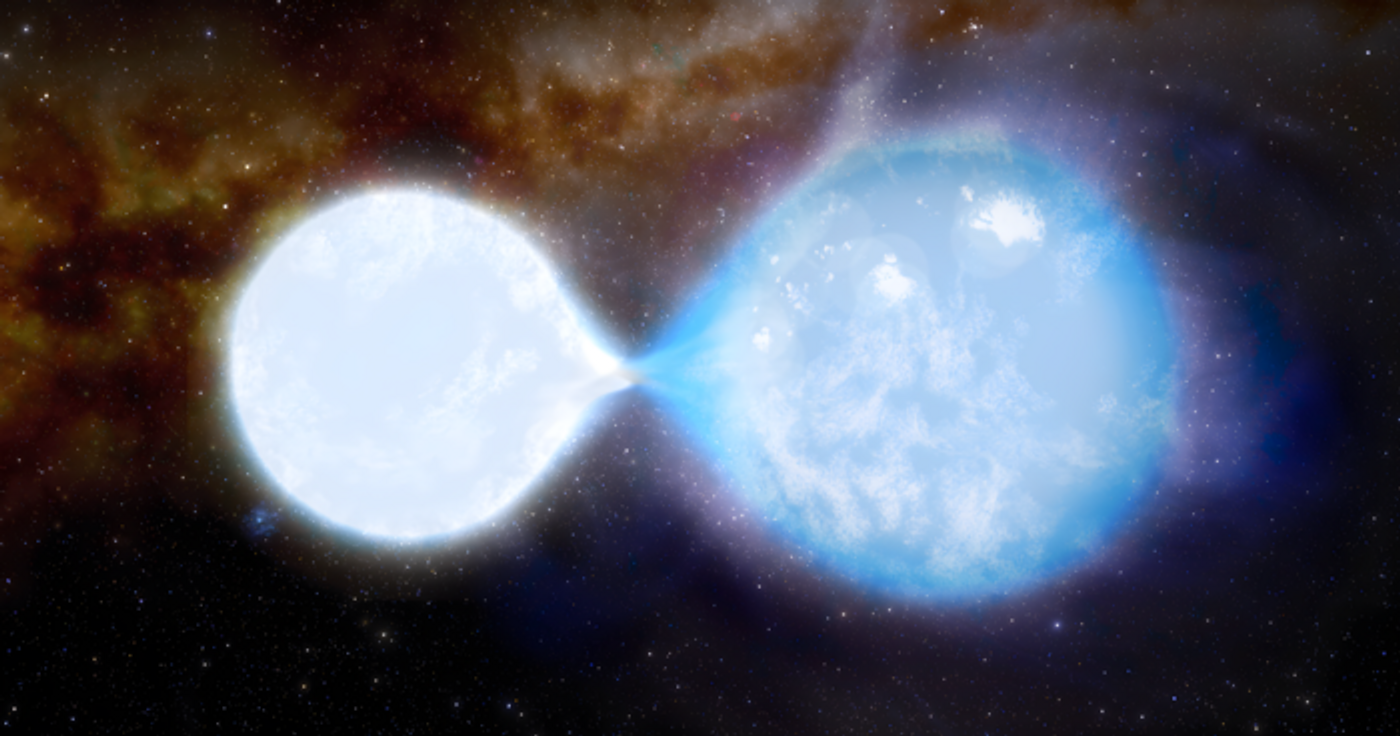Binary Star System in Another Galaxy Observed as Precursor for Black Holes
In a recent study accepted to Astronomy & Astrophysics, a team of researchers use a combination of space- and ground-based telescopes to examine a binary star system (two stars orbiting each other) in a nearby dwarf galaxy called the Small Magellanic Cloud located approximately 210,000 light-years from Earth, that the researchers hypothesize will both eventually become black holes. This study holds the potential to help scientists better understand the formation and evolution of binary star systems and black holes, the latter of which are known as the most destructive forces in the universe.
Binary star system located approximately 210,000 light-years from Earth with one star feeding material off the other star. Researchers hypothesize this will eventually result in both stars becoming black holes in the distant future. (Credit: University College London/J. daSilva)
What’s most intriguing about this binary system is one star appears to be “feeding” off material from the other star. The researchers combined their findings with longstanding theoretical models of the evolution of binary star systems and have determined that both stars will eventually become black holes, with the star currently being fed on going first followed by the feeding star afterwards.
The researchers estimate the process of each star becoming black holes will occur a couple of million years from now, followed by the new black holes orbiting each other for several billion years before they collide into each other. Once this happens, the resulting force will be so great that it will produce what are known as gravitational waves, or ripples in the very fabric of space-time, which is believed could be detected with Earth-based instruments.
“This binary star is the most massive contact binary observed so far,” said Daniel Pauli, who is a PhD student at the University of Potsdam and a co-author on the study. “The smaller, brighter, hotter star, 32 times the mass of the Sun, is currently losing mass to its bigger companion, which has 55 times our Sun’s mass.”
For the study, the researchers used spectroscopy data to determine the radial velocity, brightness, masses, orbits, and temperatures of the binary star system and compared this data with a best-fit binary star system evolutionary model. In the end, this was how they were able to determine that one star is feeding off the other star and where this will lead in the long-term.
“The smaller star will become a black hole first, in as little as 700,000 years, either through a spectacular explosion called a supernova or it may be so massive as to collapse into a black hole with no outward explosion,” said Matthew Rickard, who is a PhD student at the University of College London, and lead author of the study. “They will be uneasy neighbors for around three million years before the first black hole starts accreting mass from its companion, taking revenge on its companion.”
Pauli concluded by saying the companion will then collapse into a black hole after approximately 200,000 years, followed by the two now-black holes orbiting each other for billions of years until they merge in 18 billion years and release the gravitational waves because of their massive explosion.
What new discoveries will scientists make about binary stars systems and black holes in the coming years and decades? Only time will tell, and this is why we science!
Sources: Astronomy & Astrophysics, University College London
As always, keep doing science & keep looking up!









